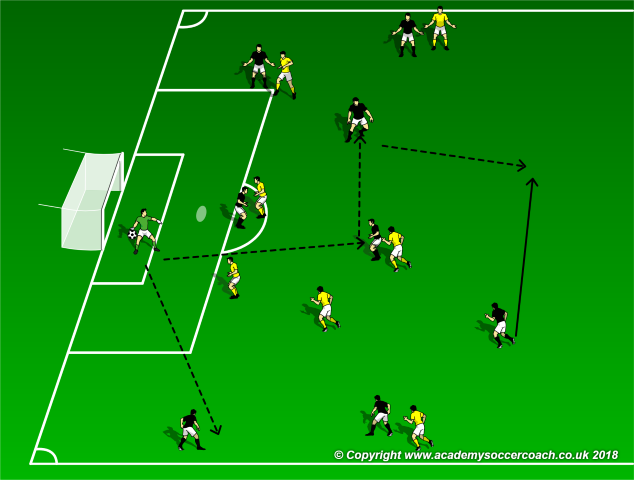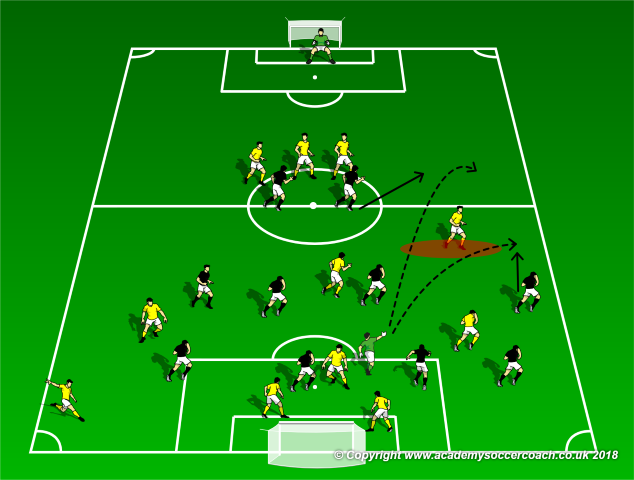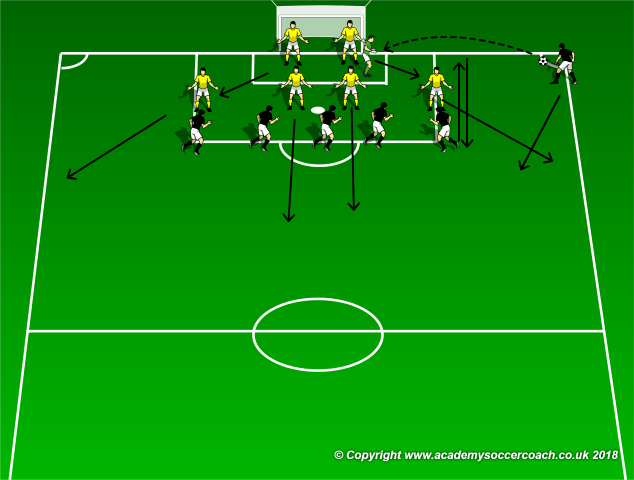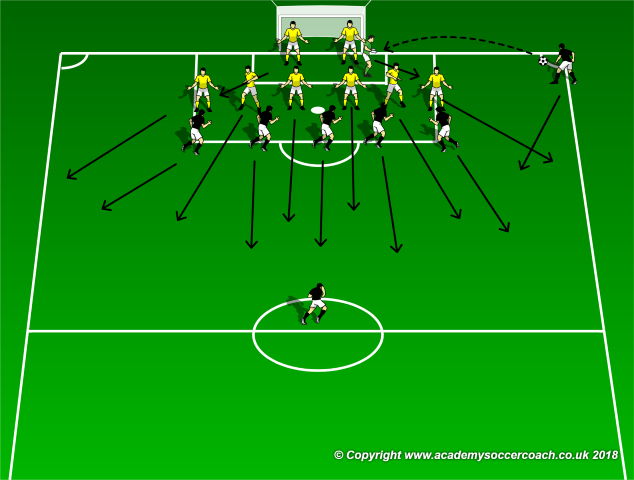By Mike Smith -
It is a great day in the progression of a team when a coach isn’t lured into having the keeper simply kick the ball as far down the field as possible anytime they come away with it clean. Actually, there should never be a situation where a coach doesn’t allow a keeper to make a good distribution to an open team mate but I understand, “ no plan ever survived the war.” If you coach a team that plays up an age group, or a young middle, junior varsity or varsity high school team, I understand the desire to just have your keeper punt it away when faced with bigger, stronger, faster, more experienced opponents. The good news is, a roll out or throw can be just as effective at getting the ball away as the kick while also allowing your keeper and team the opportunity to build and grow without sacrificing the all important win; as long as a few general rules are understood and a few common situations recognized.
First, make sure your keeper knows they have 6 seconds to release the ball, and they can step all the way up close to the top of the 18 ( the penalty box ). It is amazing how many keepers either get the ball out too quickly because they know they are just going to punt it AND then make the ill advised punt from the 6 ( inside the goalie box).
Second, utilizing all the options, ( the roll, throw or kick ) helps your team with spacing and will open up better opportunities to benefit from a long kick.
Third, understand the benefits of each distribution and the times to use them. First the roll:

A roll is the most accurate, easily handled play a keeper can make. The diagram above shows a common scenario, especially from a team which usually punts the ball long to a couple fast forwards. While a good roll out to a wide player will never be “ bad”, a roll, because of the increased accuracy, is often a viable option even for a passively marked player. If the keeper above can roll the ball to the right side of their central defender ( black ) the combination with the open central players could lead to a quick counter. The fact is, there are 6 attackers ( yellow ) shown in the play as the other 4 defenders who are most likely expecting a long punt will have retreated to mark the two attacking forwards. A roll is perfect here to exploit space, an 8 v 6 numbers advantage and with some organized movement up from the back line, an 8 v 4 advantage going forward.
The throw:

A throw is going to bounce a bit, but when your team is pushing out quickly from an attack, the bounce going forward is easily handled and the distribution goes farther than a roll and is faster than a kick. Note the isolated defender ( yellow ) shown in the red circle above. This situation is common when a keeper catches a service for example. A throw here can spring a wing up the line clean, or with a 40-50 yd toss can even hit a forward and / or draw out a defender near the half line– all while the ball is traveling in a way which is quickly settled to feet. Plus, a roll is an option to the mid fielder close to the keeper headed to the isolated defender in red. It is a win / win where as a punt here would play into a 2 v 3 man down scenario as well as give the defending team time to recover.
Set Up
Obviously, a punt is the final scenario and is a great option to get the back line of the attacking team to move back early and / or burn them when your side has caught them high and when you have a numbers even or up attack. Practicing these situations is easy with a few half field scenarios.

To start, have a team of 6 attackers ( black ) set up as shown above, with 5 at the top of the box and one serving in a corner kick. To start, the kick should go right to the keeper but can progress to make the keeper work a bit to get it. The 6 defenders ( yellow ) Can race up and out as soon as the keeper catches the ball. As soon as the kick is made, the attackers must touch the end line and then recover to find their mark- they do not go for the ball on the service. The serving attacker may recover back as soon as they send in the kick. The idea here is the keeper should catch the service, step towards the top of the 18 and look to roll the ball to an open yellow player. The wide player on the far side should always be open, if they are not, a player in the middle will be. Play resets when the yellow player receives the ball cleanly.
Progression
In a similar set up, add two defending players ( yellow ) and 1 attacking player in the center circle. This time, when the keeper catches the ball, all players may move in their required direction, yellow players out to transition to attack and black players back to transition to defense. The catch here is the black player in the center circle has to choose a direction to move and mark to cover – or choose to hold. Either way, the yellow team will have a free runner going forward and the keeper should hit them with a good throw to keep the speed of the counter attack.

Final Progression
The final progression is a full field scrimmage with two opposing formations. The keepers can actually switch between sides as the need to roll, throw or kick presents itself. The coach can also adjust numbers or restart rules – like letting the keeper start with the ball in their hands – to create the desired scenarios. In theory, with one side in a 4-4-2 or 5-4-1, the options to roll or throw should be greater when playing out. The attack focused side – thus the punting side – should run a 4-3-3 and anytime the keeper gets the ball and they have even or numbers up at half field on the counter, the ball should be punted.
Coaching Points
In addition to the proper mechanics of each skill, which should be practiced daily, the coach should encourage the keepers to see the field, use their time and their space to create multiple distribution options. A keeper which can and will use these three distribution options creates a team which can and will use multiple possession and attacking options: the proverbial win/win. Good luck!
By Mike Smith
Currently the Head Coach for University Heights Academy Boys Soccer in Hopkinsville, KY , Mike is in his 14th year as a high school head coach with 23 years coaching experience overall and 34 year as a student and fan of the game. He holds a USSF D License.


